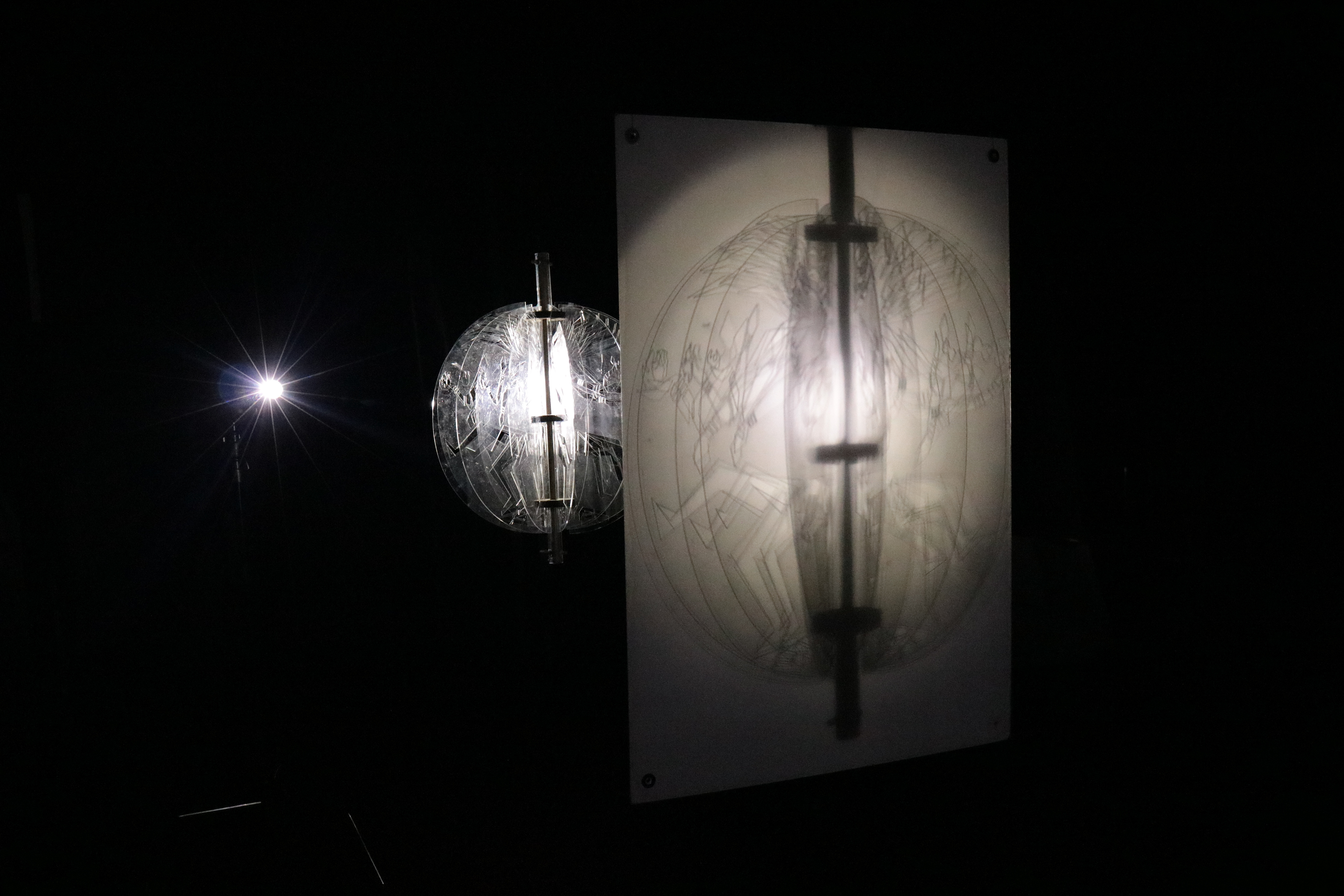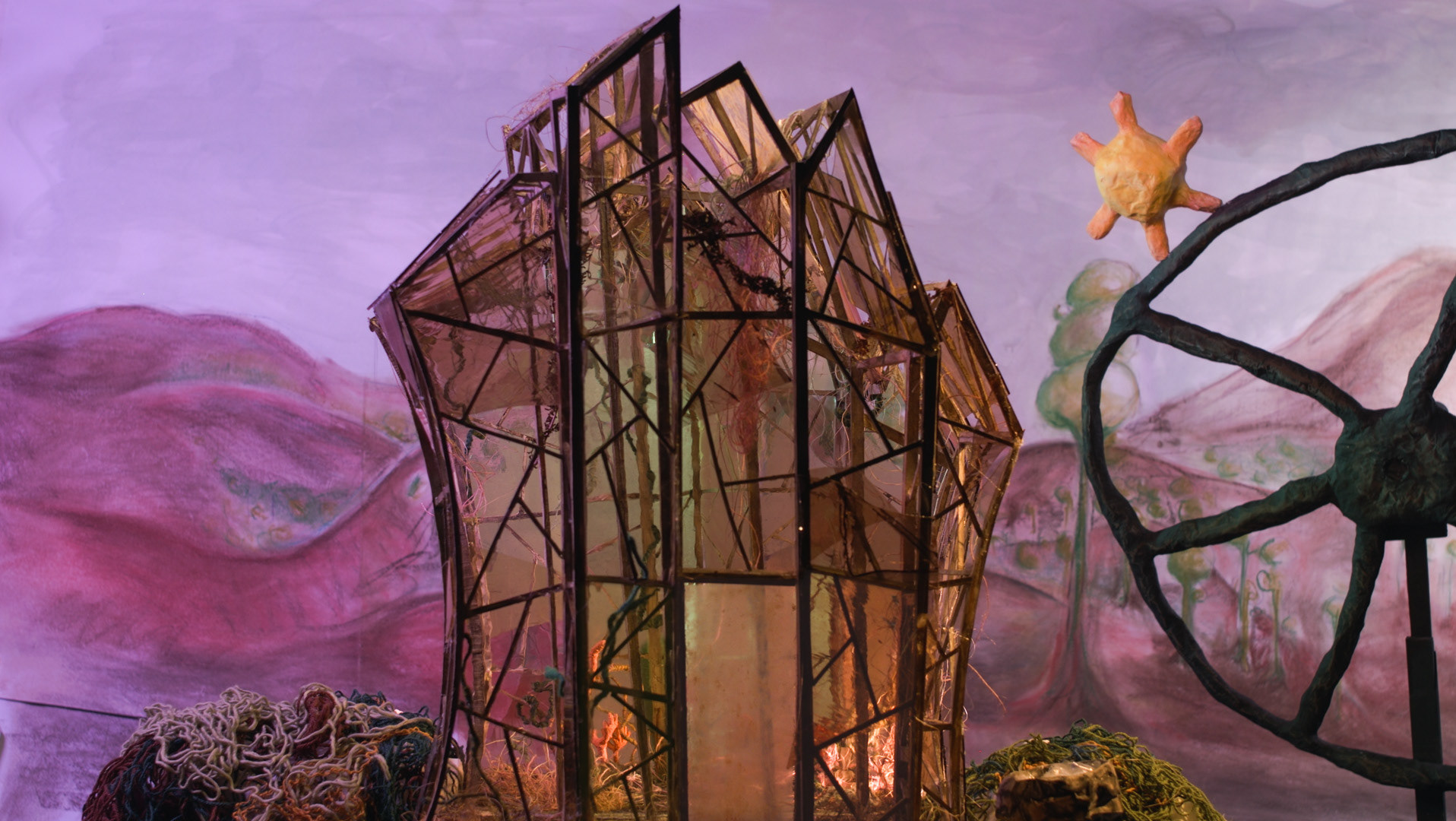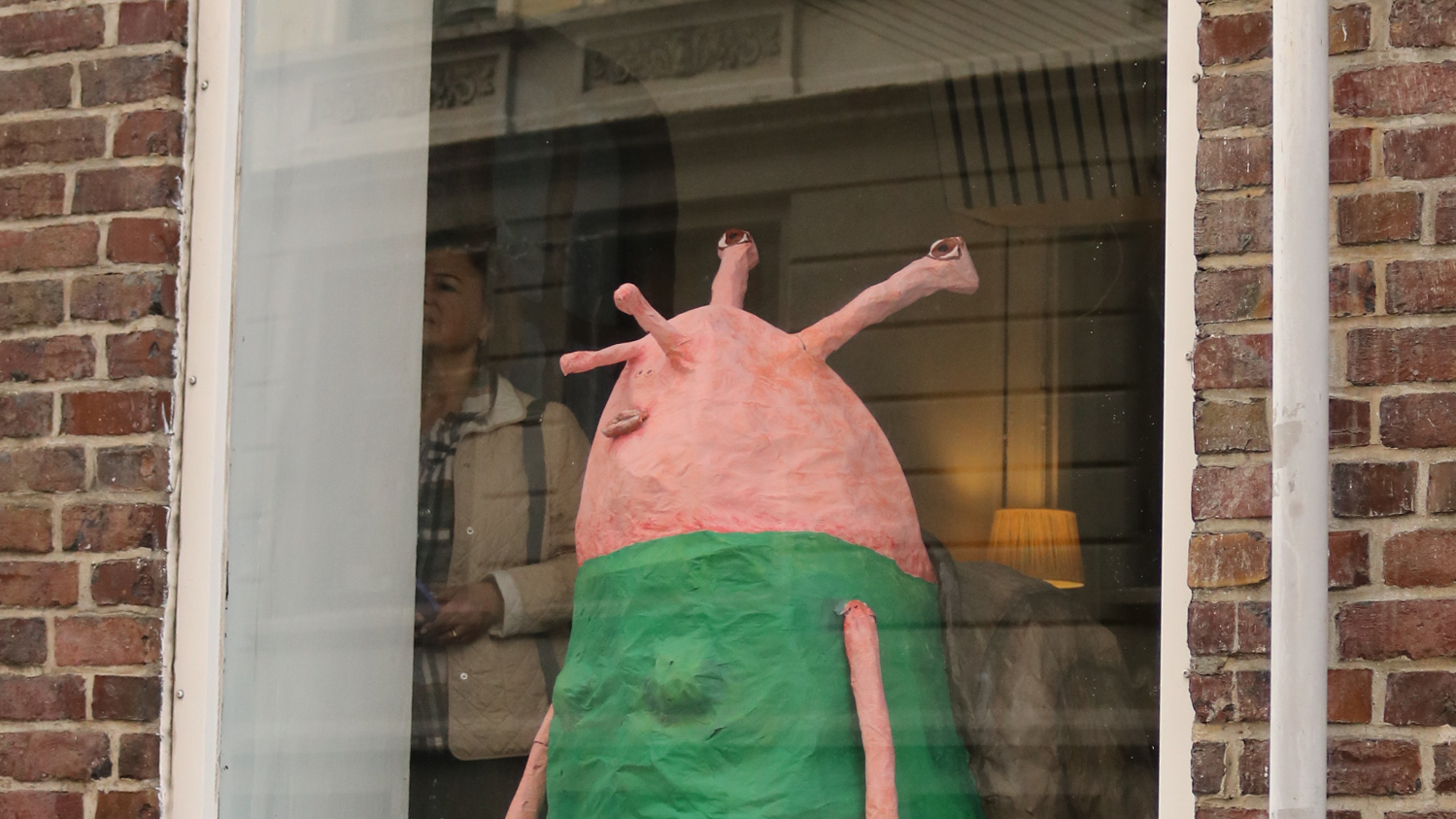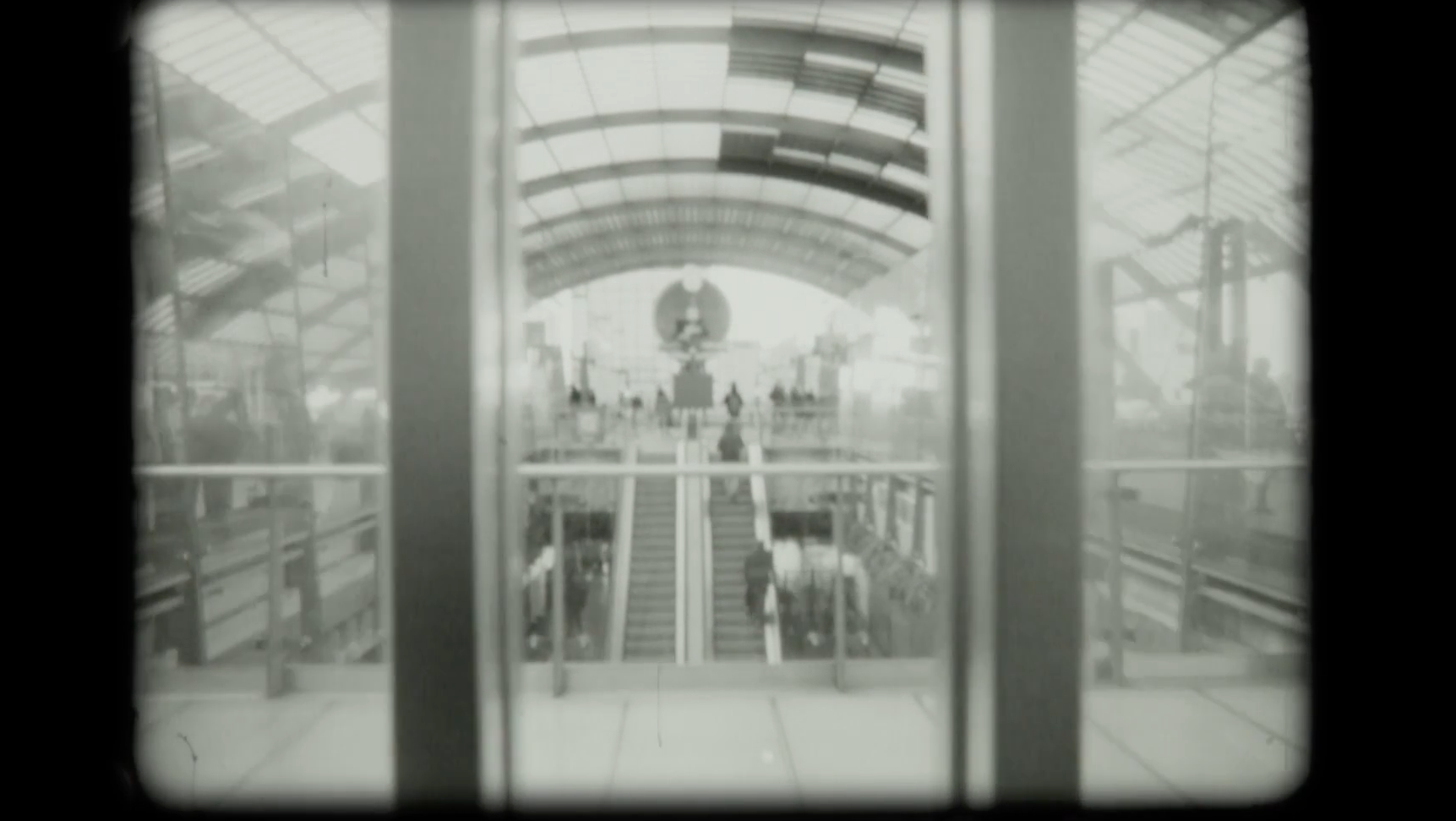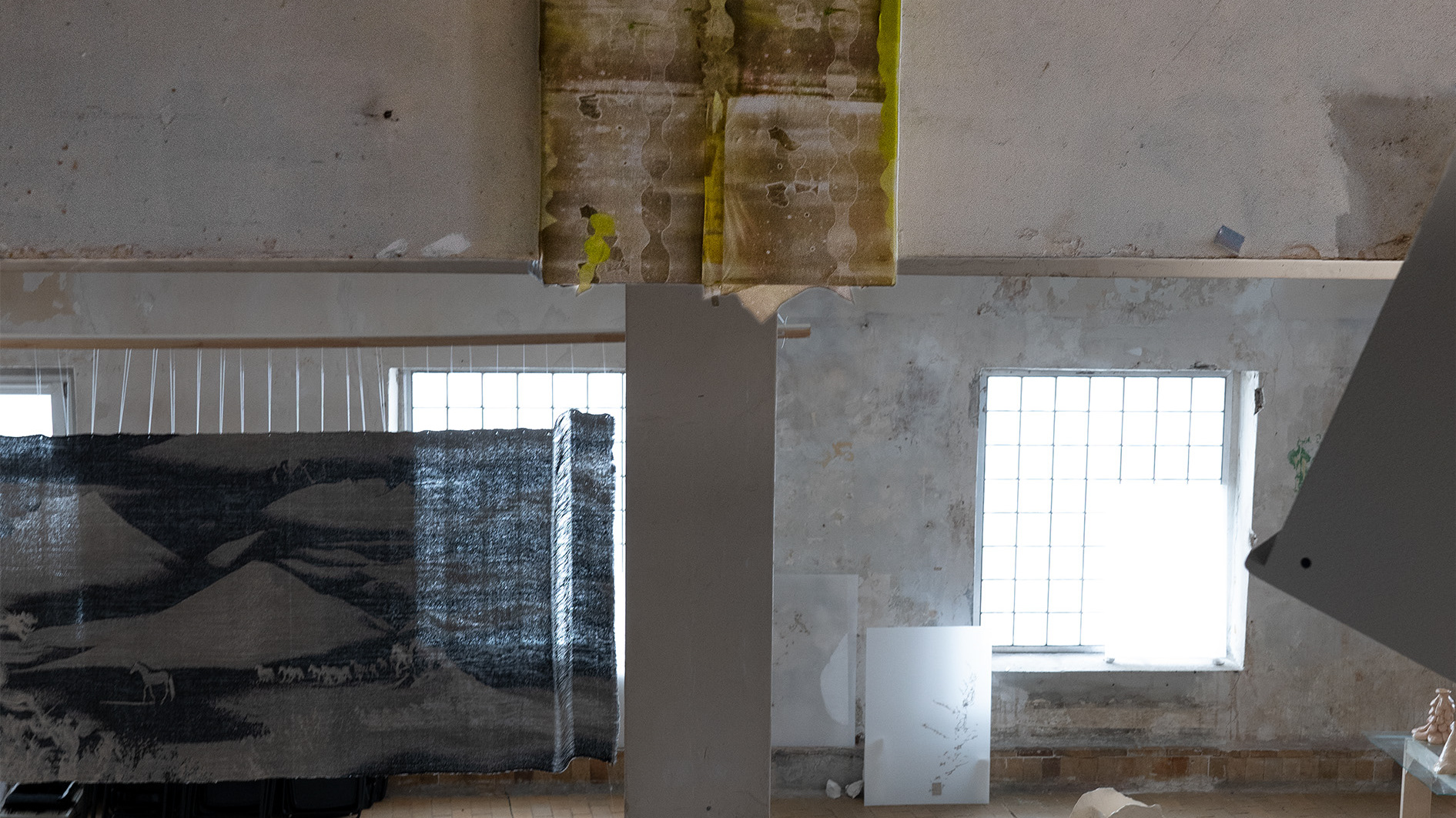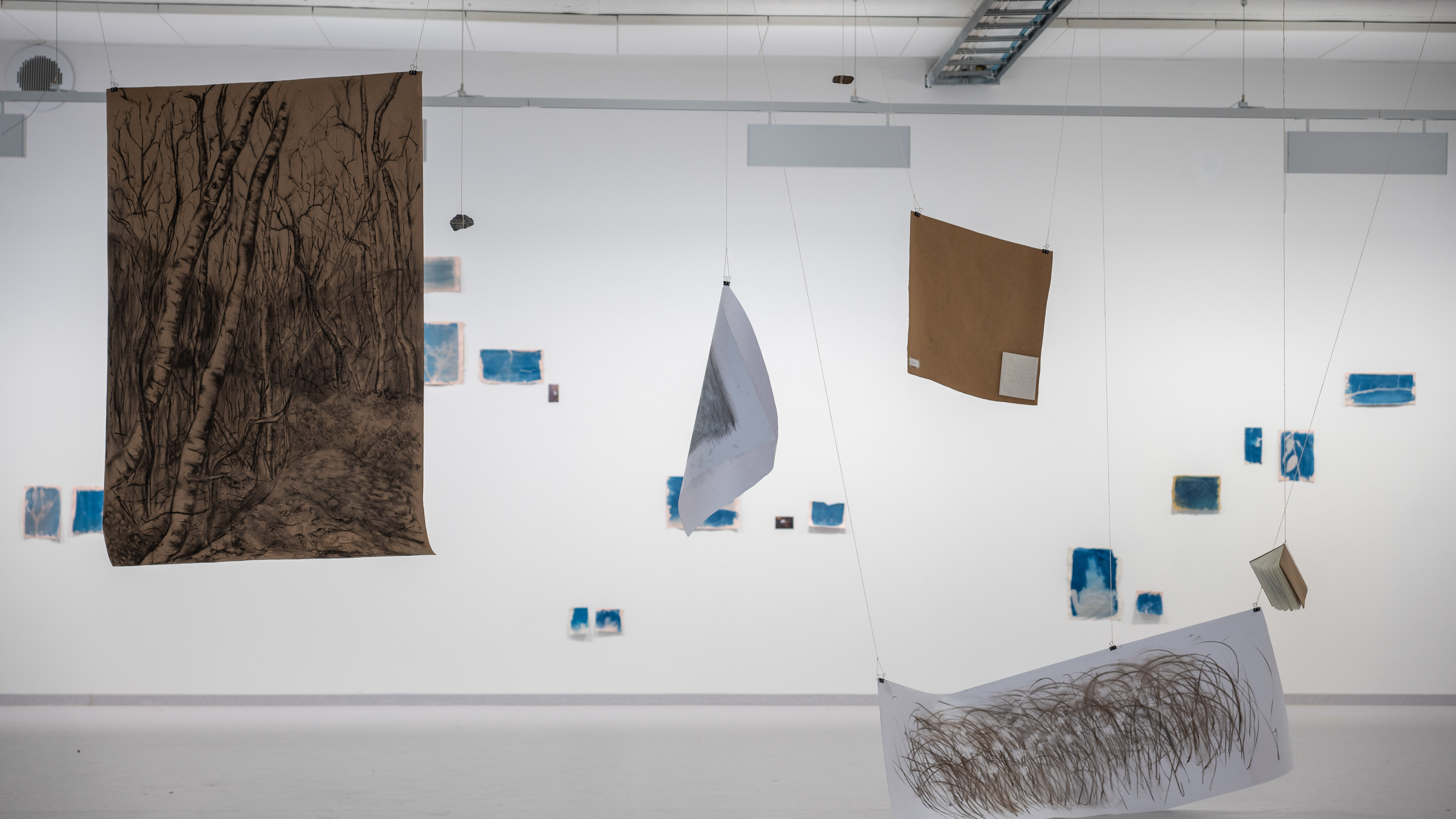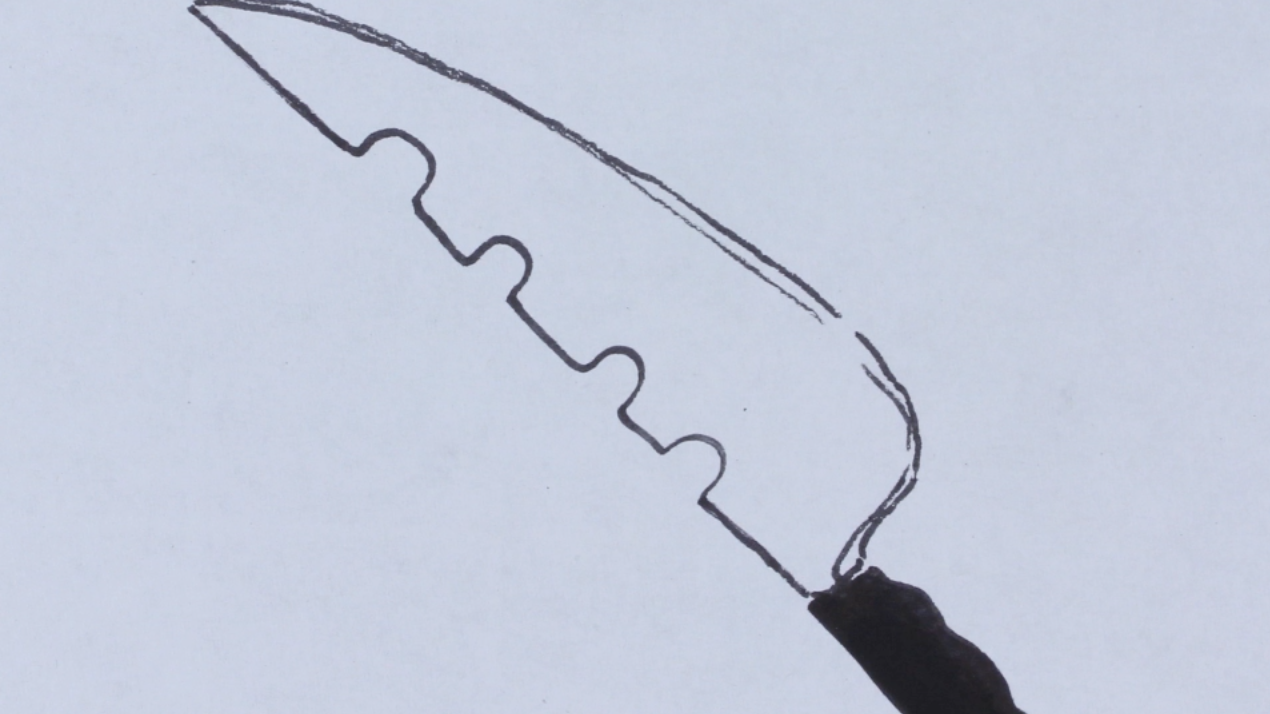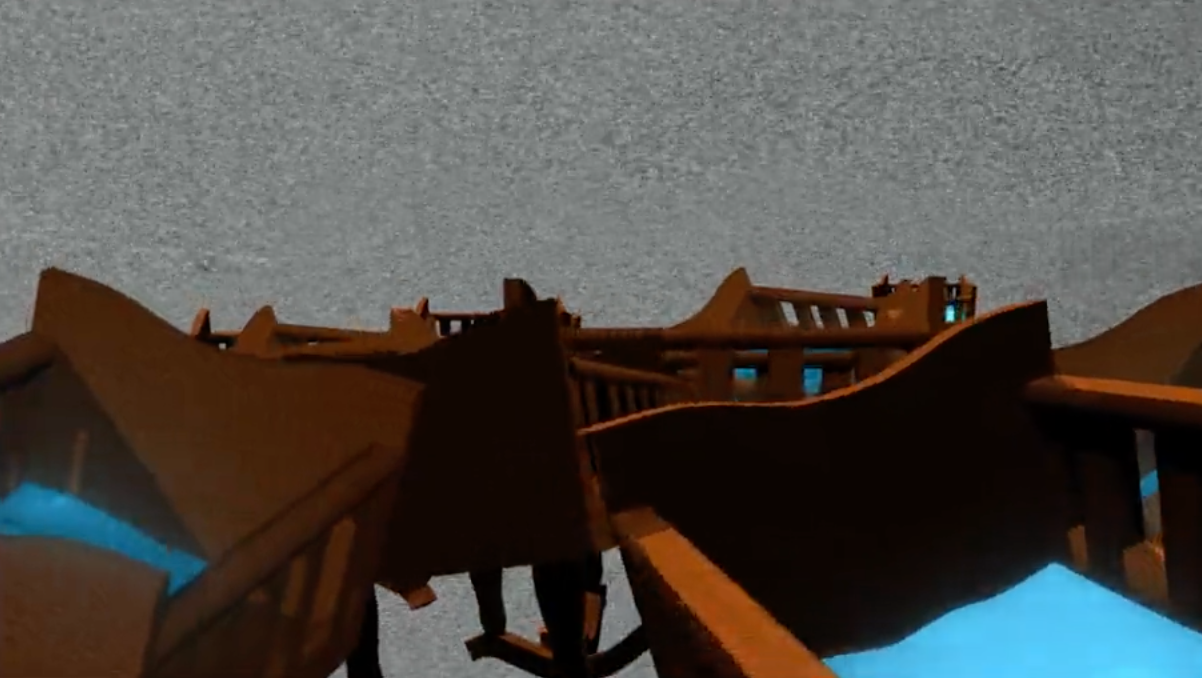zoetrope I
plexi glass, wood, tape, throwing wheel
50 x 50 x 30 cm
2017
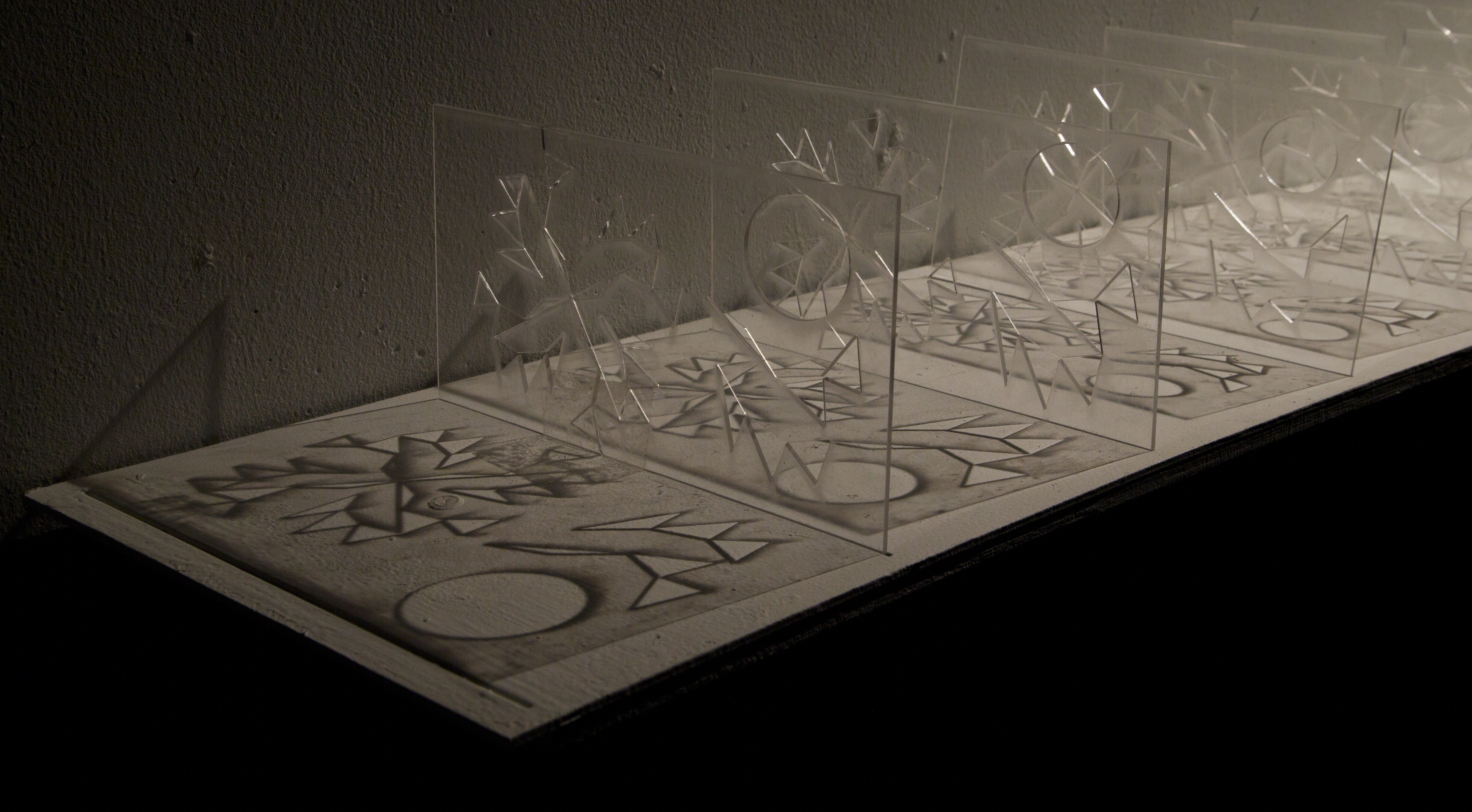
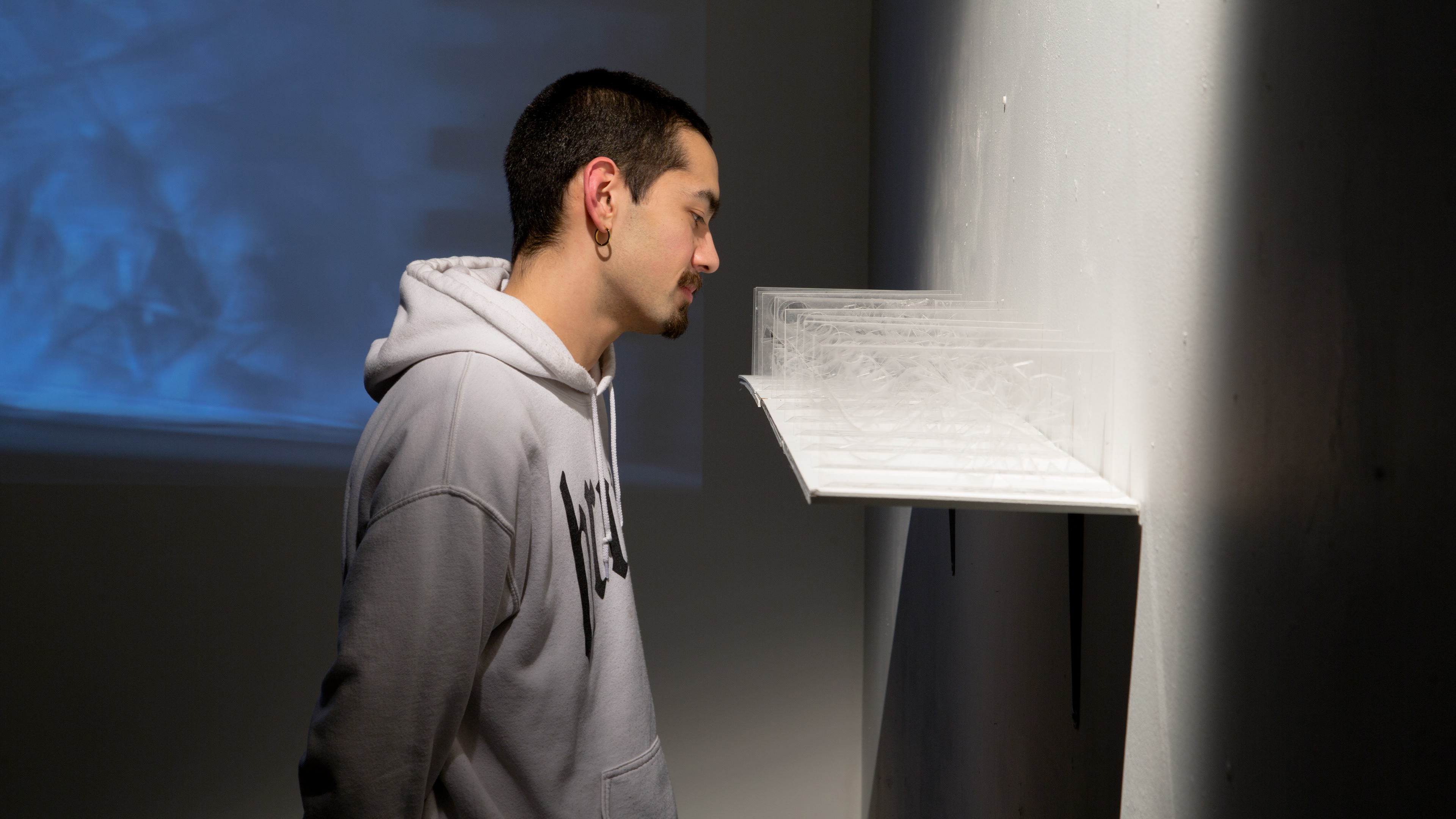
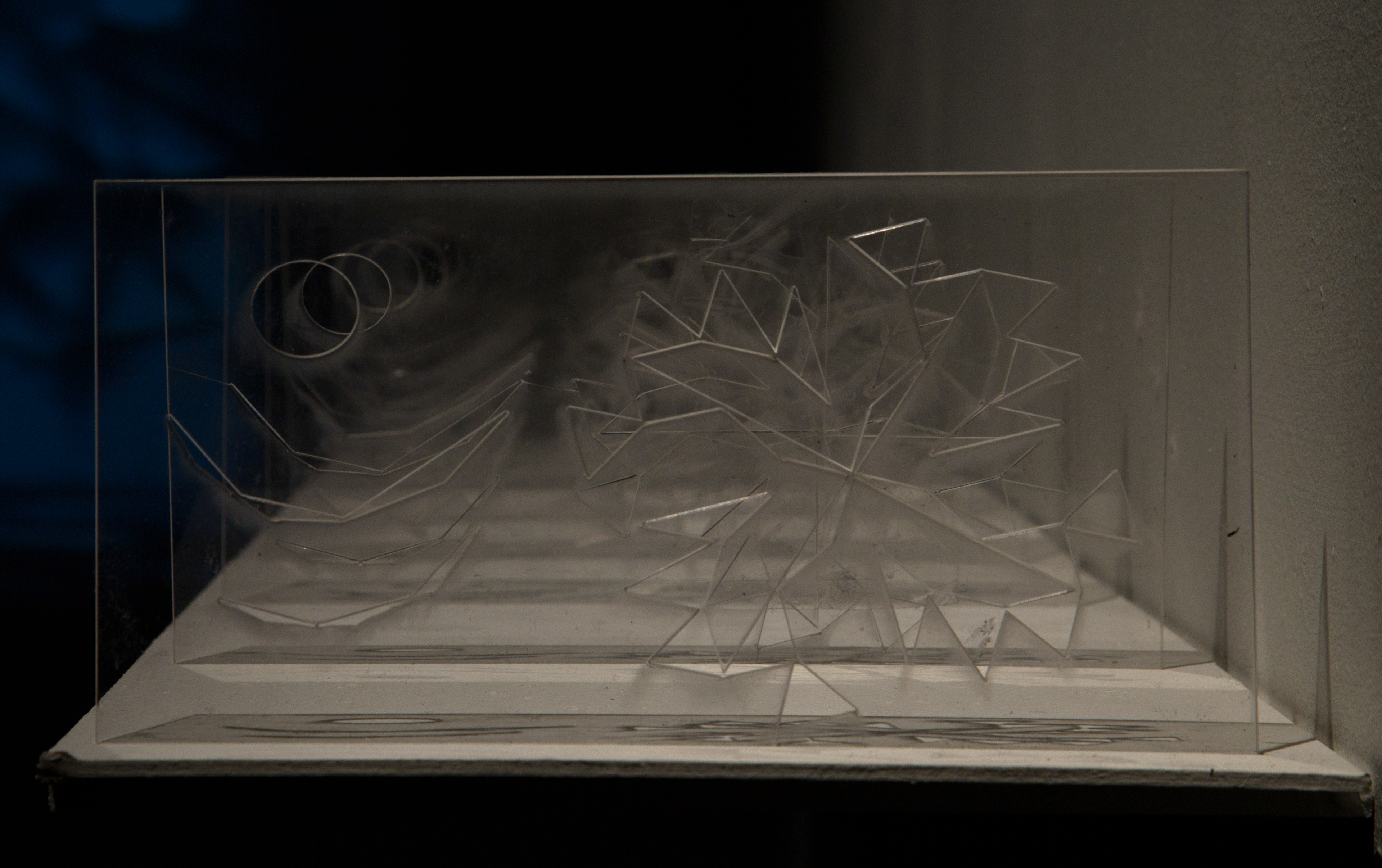
Optical illusion instruments paved the way to film and animation. I discovery zoetropes while researching the history of animation, and started experimenting with shapes and structure designs to make my own. Zoetrope I is a functioning zoetrope made from 12 plexiglass panels instead of a single cylindrical piece. The panels are arranged like a flower expanding from the center. The gaps between them work like a shutter and trick the eye to think that there is a continous movement. In the video, the zoetrope is placed on a potter's wheel for it to rotate.
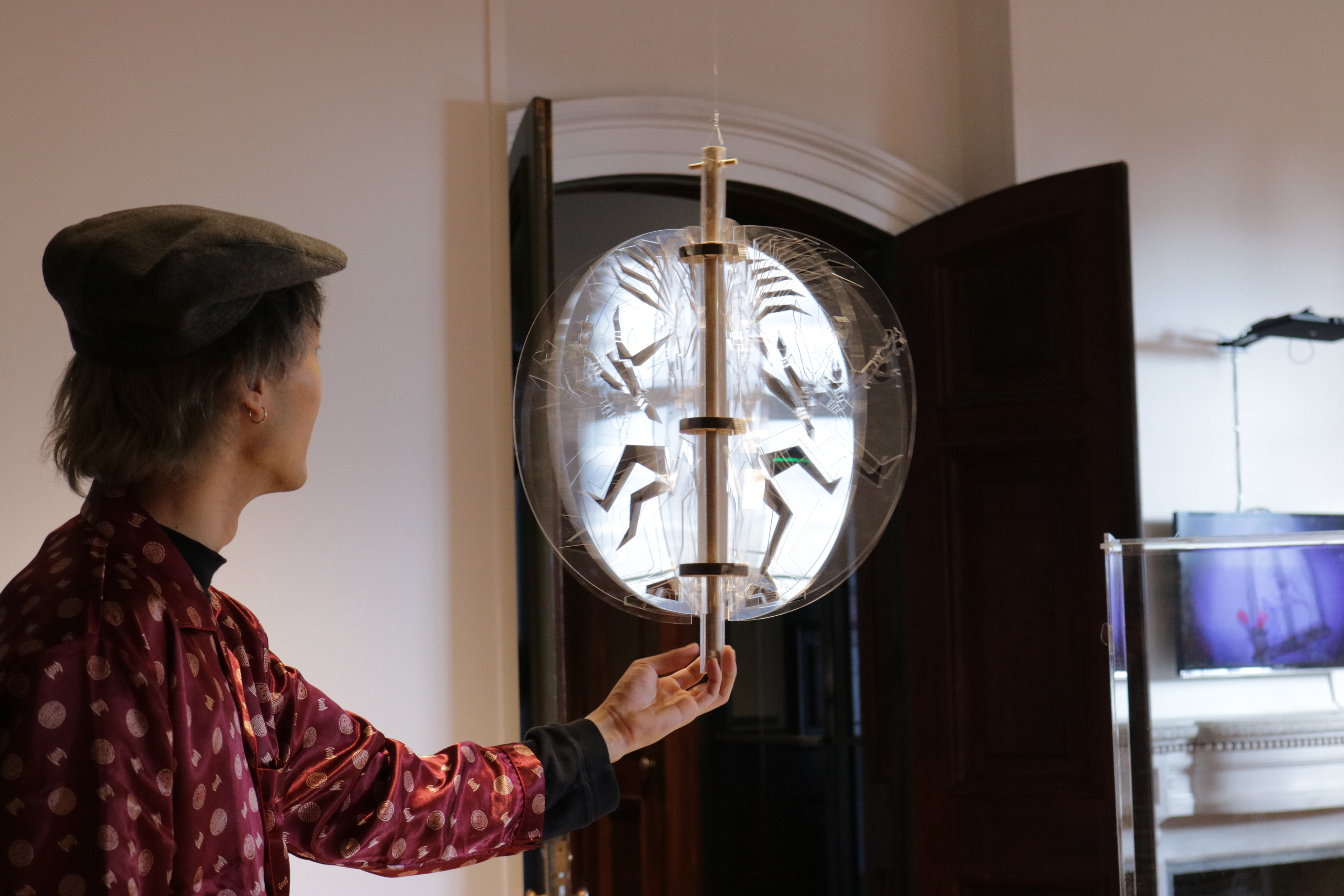
zoetrope II
plexiglass, wood, fishing line
50 x 70 x 50 cm
2017
Zoetrope II is the second iteration of the zoetrope design I made with the aim of making the device more self-sufficient. The modifications allow it to be turned by hand instead of a potter's or any other stable wheel. The image on the panels is a simplified version of dancing Shiva, also known as Nataraja. The purpose of Shiva’s dance is to release humans from the illusion of self. I interpreted this spiritual message as a way to remind myself of our intersections, one of which is our minds. Optical instruments were used to examine the mind and brain. One of the first of such instruments is the Artificial Waterfall created by physiologist Henry P. Bowditch in 1890. Bowdith made this instrument to study why hikers perceived rocks to be rising after staring at descending water.
